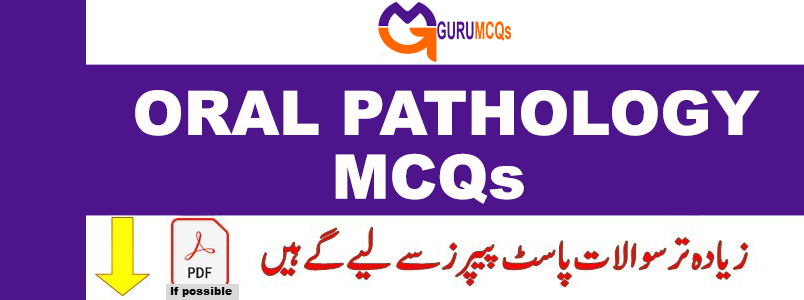
The mouth, being a vital organ with diverse functions, is subject to various diseases falling under the domain of oral pathology. This field encompasses the study of diseases affecting the mouth, jaws, and associated structures like salivary glands, facial muscles, temporomandibular joints, and perioral skin. Oral pathology, as a specialized discipline, focuses on diagnosing and investigating the causes and effects of diseases impacting the oral and maxillofacial region. For a thorough and objective assessment of students’ critical thinking abilities, multiple-choice questions (MCQs) serve as the preferred format. Gurumcqs.com offers a comprehensive collection of 2000+ oral pathology MCQs with answers and detailed explanations. These MCQs are carefully selected from reputable and trusted reference books on oral pathology. They prove beneficial for interview preparation, entrance examinations, competitive exams, and certifications, catering to individuals with varying levels of experience, including both seasoned professionals and newcomers. Additionally, you can explore MCQs on Oral Anatomy on this platform.
41. Pleomorphic adenoma arises from______________?
A. Myoepithelial cells
B. Aciner cells
C. Connective tissue
D. Stem cells
42. Which of the following statement is FALSE?
A. A salivary duct obstruction can cause a unilateral swelling in the floor of the mouth that is largest before a meal and smallest after a meal
B. The lesion termed a ranula is associated with the sublingual salivary gland
C. The sublingual salivary gland is the most common site of salivary gland neoplasia
D. A pleomorphic adenoma is the most common salivary gland neoplasm
43. Salivary gland stone most commonly involves___________?
A. Submandibular gland
B. Parotid gland
C. Sub lingual glands
D. Lingual glands
44. Severe pain which arise after injury to or sectioning of a peripheral sensory nerve is called as____________?
A. Temporal arteritis
B. Neuralgia
C. Neuritis
D. Causalgia
45. Patient suffering form Eagle’s syndrome complains of__________________?
A. burning sensations in mouth
B. excessive salivation
C. Glossodynia
D. Dysphagia
46. The latest drug of the choice in the management in trigeminal neuralgia is______________?
A. valproic acid
B. carbamazepine
C. Diphen hydantoin
D. None of the above
47. Facial paralysis is tested by_______________?
A. Whistling
B. chewing
C. Protruding the tongue
D. Swallowing
48. Which of the following structures are associated with bells palsy______________?
A. sub mandibular gland
B. Seventh cranial nerve
C. Temporomandibular joint
D. Glosso pharyngeal nerve
49. If a patient with Raynaud’s disease puts his hand in cold water, the hand appears_______________?
A. Red
B. Yellow
C. White
D. Blue
50. Geniculate neuralgia is caused in the nerve______________?
A. VII
B. IX
C. X
D. II

Pingback: Oral Histology MCQs Questions for Test and Exam Preparation | GURU MCQS
I was recommended this website by my cousin. I’m not sure whether this post is written by him as nobody else
know suc detailed about my difficulty. You are wonderful!
Thanks! https://www.waste-ndc.pro/community/profile/tressa79906983/
I was recommended tthis webnsite by my cousin. I’m not suure whether this post is written by
him as nobody else know such detailed about myy difficulty.
You are wonderful! Thanks! https://www.waste-ndc.pro/community/profile/tressa79906983/